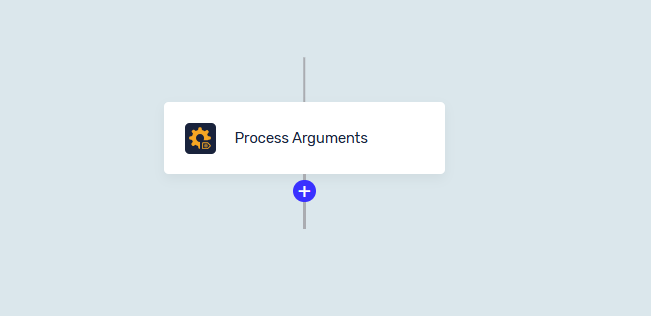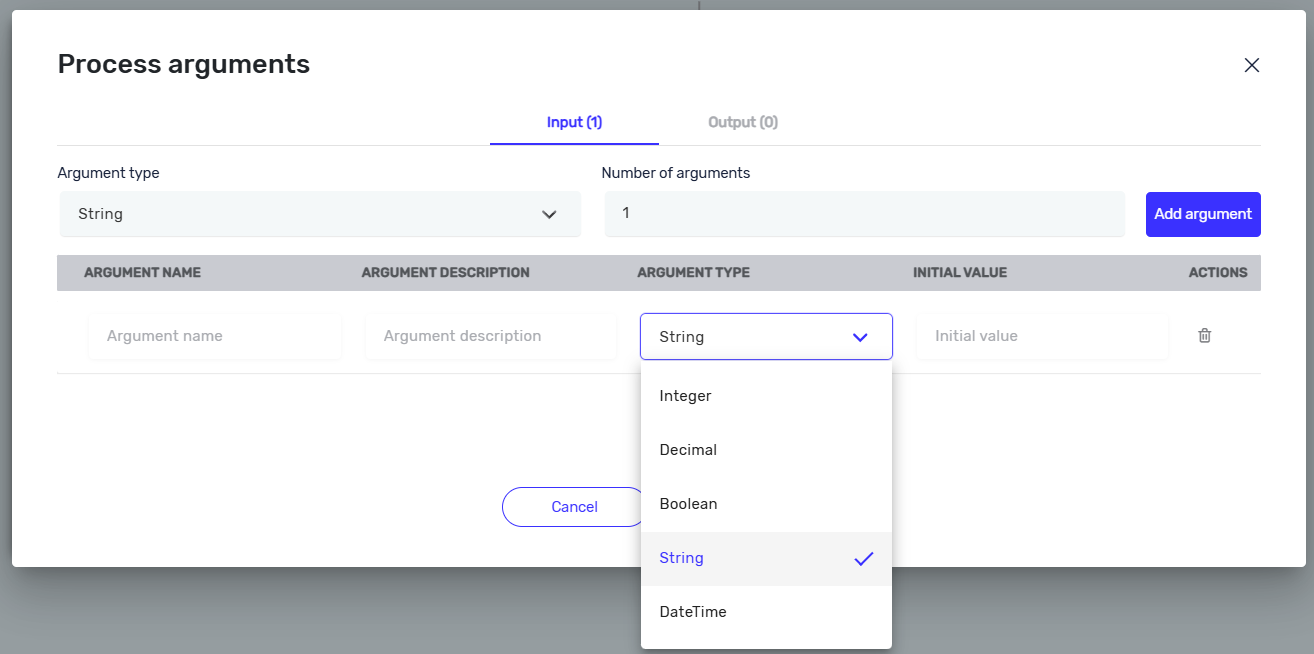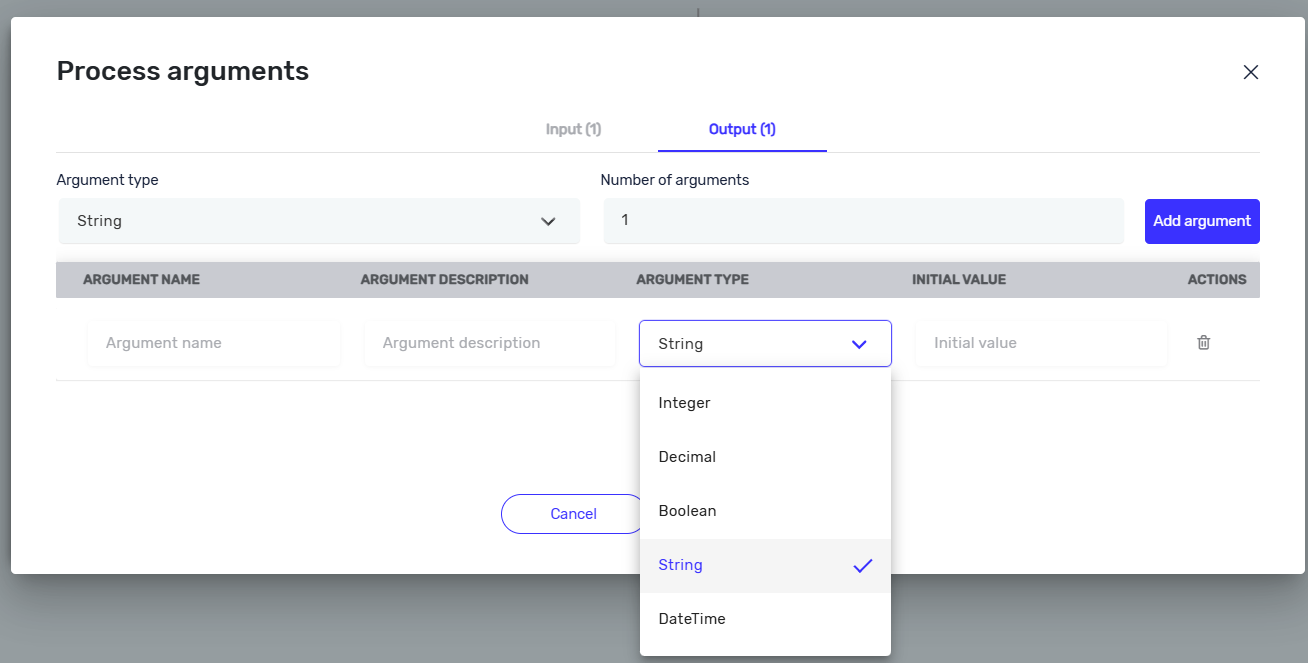Process Arguments
You will notice that every process has Process Arguments Step. This step is used to add input variables that can be transferred to the process through client API

Open the window editor by right-clicking on it, then add as many process arguments as needed. You can add
- input arguments - variables that will change with each execution of the process
- output arguments - that provide information about the process. For each argument, you need to set default values
You can add variable types of Integers, Decimal, Boolean, String, and DateTime by pressing the “Add argument” button. Press “Confirm” to finish adding arguments.
Input Arguments
It's essential to have default values because these inputs will be used within the process. This ensures that you have values available during development so you must define initial values that will be passed when you run the process in the development stage. In unattended modes (Test or Production stages), you will need to specify these input arguments for each process execution when you create a job through the API or set up a schedule.

Output Arguments
You should also set a default value for output variables, which will be used if the process encounters an error before assigning a value to the output. This default value should indicate that the robot did not execute the step to set up that variable.
These output parameters are primarily used for APIs to communicate the results of the robot’s execution.

NOTE: Process arguments will be added to the process after saving the process. Also, all the changes in Process arguments will be preserved after saving the process
